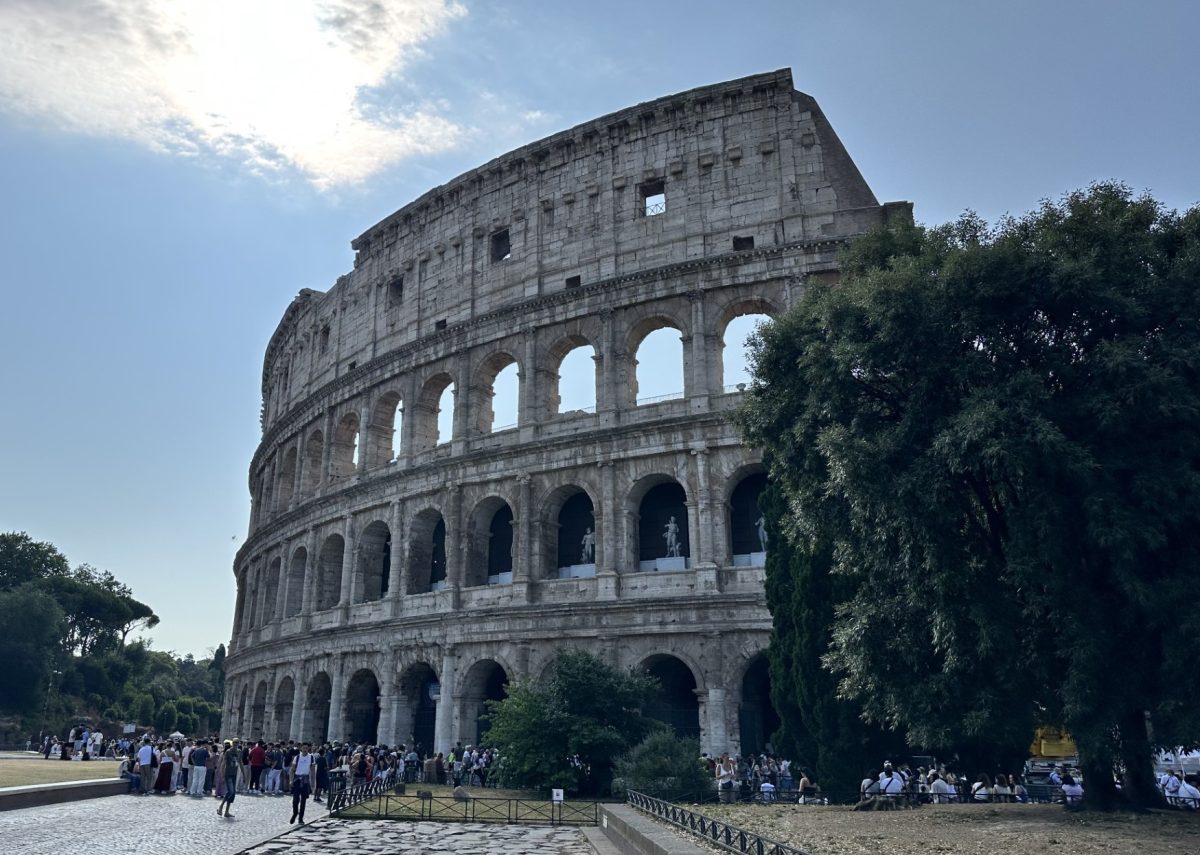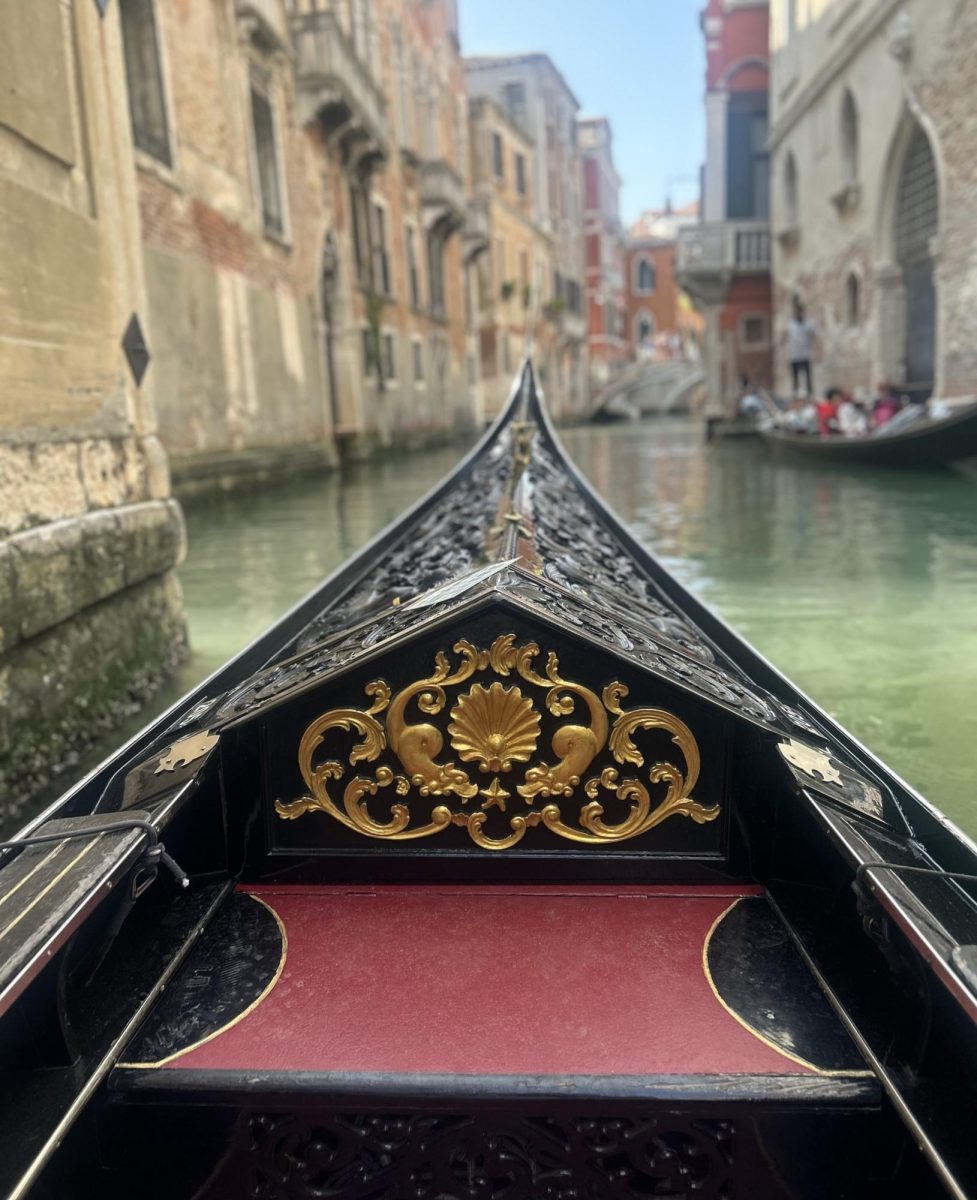Venice, Florence, and Rome, the trifecta of Italian culture, are renowned for bringing history to life for the millions of tourists who grace their streets each year. Reading a novel about gallant gladiators who fought for their lives in the Colosseum, and watching documentaries about Da Vinci’s future-forward ideas, waned in comparison to experiencing the real thing.
Wading through the canals of Venice in a gondola, walking the bustling streets of Florence, intoxicated by the pungent aroma of espresso, and exploring the mysterious Necropolis under St. Mark’s Basilica, put any book to shame.
Standing in a place of such significant influence with my gelato in hand, Italy no longer became a forgetful chapter in my old textbook, but a tangible experience, which allowed me to indulge in a culture so different from my own. (For complete photo gallery of Rome, click on image above)
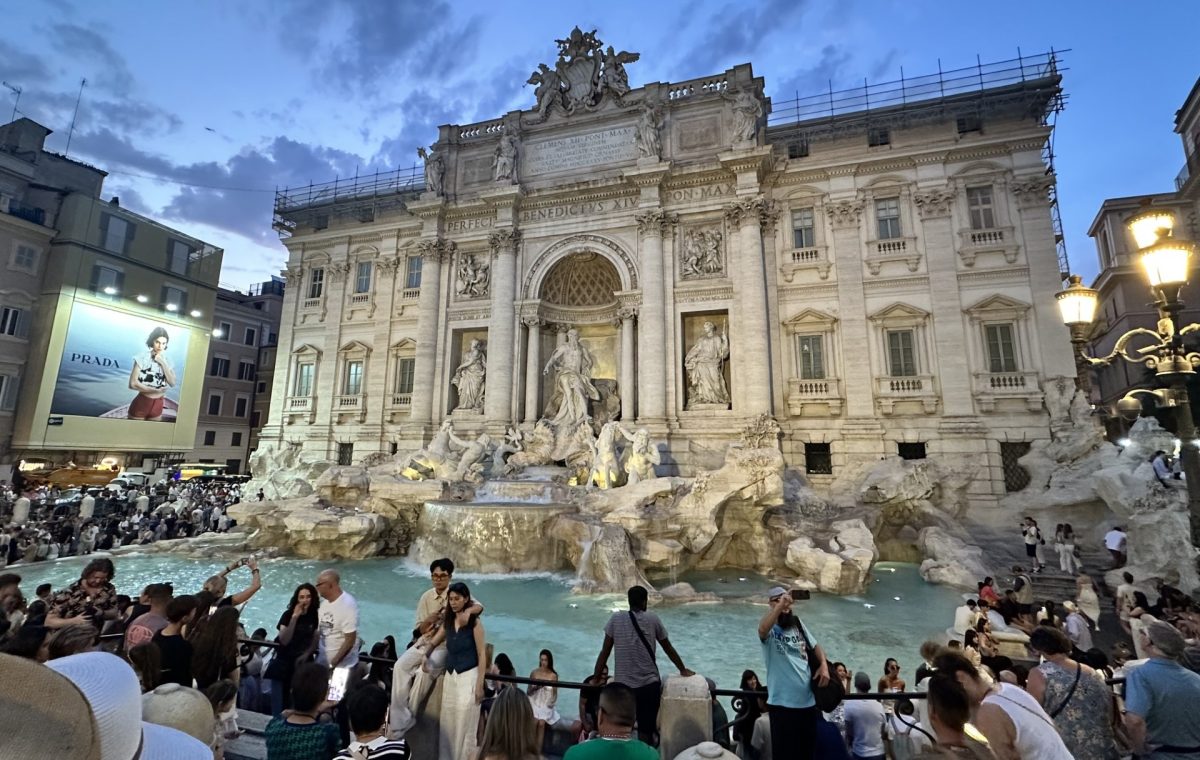
ROME
At long last, and after a near brush with missing our train, we arrived at the most anticipated city during our vacation, Rome. Our first venture began with a grueling 30-minute walk, almost entirely uphill, to the Trevi Fountain. After battling the growing crowds, we arrived at the foot of the fountain where we took part in the tradition of throwing pocket change into the waters using our left hands over our right shoulders, to signify safe travels and a hopeful return to Rome.
The Trevi Foundation, which features the sea-titan Oceanus, is said to represent the abundancy and power of water. Being there, I can confirm that aside from being an architectural masterpiece, the towering walls and rushing water can make anyone feel small. Similarly to how the Ancient Romans used to fear the gods and cower under their rule, the fountain made me feel like nothing compared to the forces of the water.
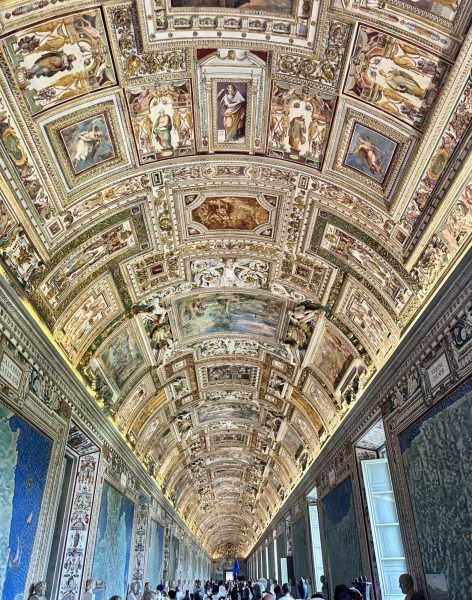
The struggle back to the main road was somehow more difficult than the descent, but after clawing our way out, we settled in for a delicious pasta dinner. After all, what exactly is Italy without pasta and gelato? Up until this point, I had been thriving on my unintentional internal quest to find as many gnocchi variations as humanly possible, but I can confirm that Italian pasta lives up to the hype.
Not far from the Trevi Fountain, nestled within the City of Rome lies Vatican City, the smallest country in the world. Tucked away behind walls reaching up to 12 meters, Vatican City houses some of the most important religious art pieces, scripts, and buildings, which lay the foundation for the Roman Catholic Church, the home of the largest religion in the world.
Although it is within Rome, the Vatican City is an entirely sovereign entity. For me, leaving the European Union without ever stepping foot outside of Italy had never been at the forefront of my mind; however, entering the landlocked ecclesiastical state of Vatican City made standing outside in the scalding heat worth all the pain. The day began with a tour through the Vatican museums, traveling through the Room of Immaculate Conception, and ending in the iconic Sistine Chapel, where, to my despair, no photography is allowed.
However, who needs photography when history is able to tell stories of its own. Seeing the art, which is a perfect mix of beautiful and haunting, sent literal chills down my spine. When I inevitably return to Vatican City, I would spend an entire day studying the details of the Room of Immaculate Conception. The little glance I had of it was simply not enough to satiate my desire to discover more. I feel as though I only scraped the surface of the Vatican’s deep history, and I cannot wait to explore more.
However, the highlight of the trip still lay ahead, and after narrowly dodging several outwardly aggressive street vendors, overpriced shops, and gimmicky tour guides, we arrived at St. Peter’s Basilica. We arrived while a service was in session, and the architecture, tall, beautiful, and haunting, loomed far above my head. The walls were intricate, but the ceilings even more so. But the largest church in the world housed another kind of secret that lay just below the surface.
After exploring the inside of the basilica, we departed for what was, in my opinion, the highlight of the trip, the Scavi tour of the ancient Necropolis located beneath the Basilica. From the narrow alleyways to the minuscule rooms in the necropolis, this trip was testing not only my heat tolerance, but my immense claustrophobia.
While exploring the streets, almost perfectly preserved, our tour guide enlightened us about the different families which occupied each of the houses, and what kind of activities occurred within them. He said that the Necropolis was a place where families would come to share meals with their dead. The houses most definitely reflected the wealth of some families, contrary to others, with some houses being elaborate and two stories, and some being barely larger than a single room.
This was most likely the most informative tour that we went on, ending with a clear view of the bones of St. Peter, preserved in the exact location where they were excavated in the 1940s. It was simply amazing, but I can’t say that I wasn’t relieved when we reached the surface again.
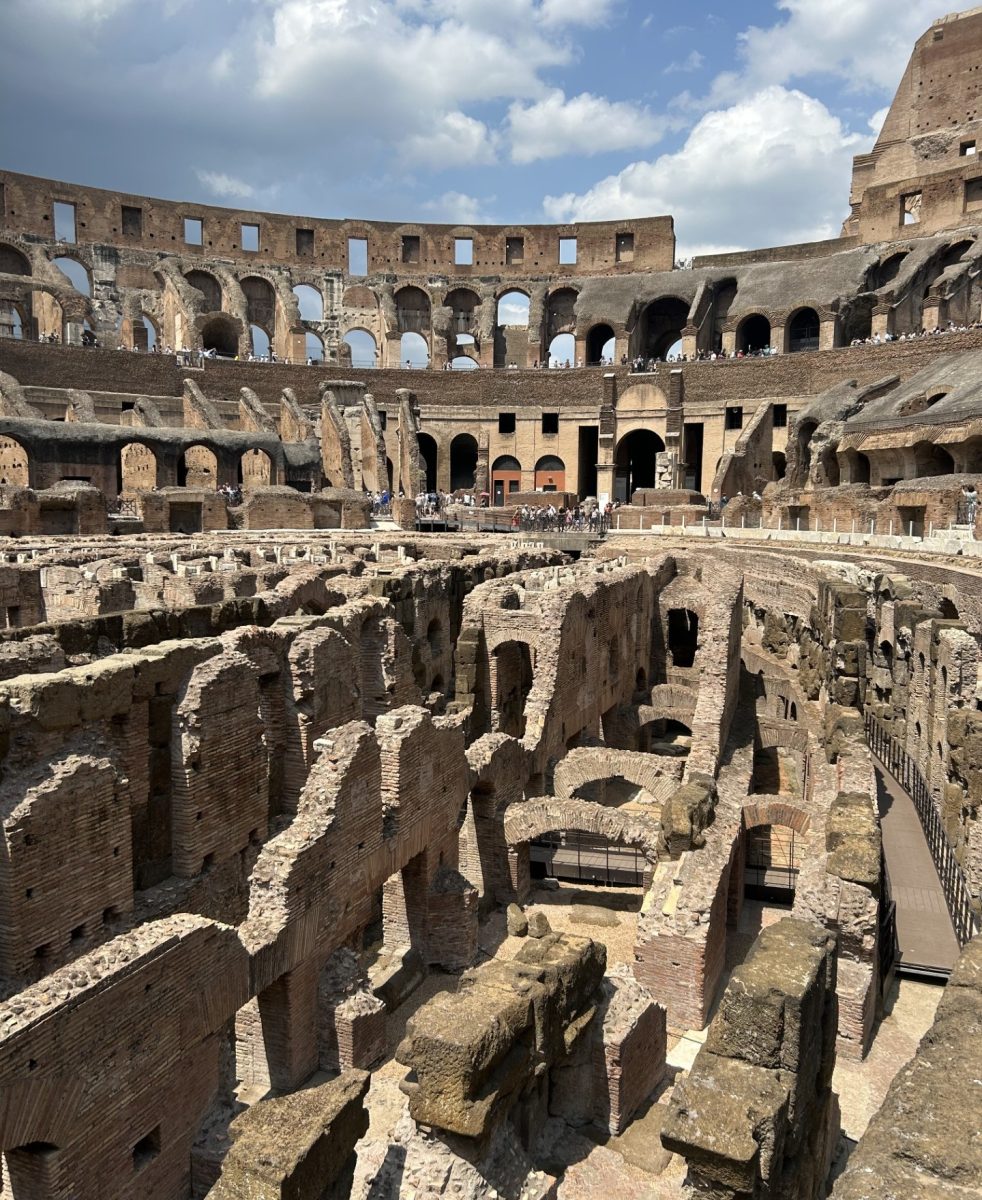
Cardboard swords are so nostalgic, they remain the soul of not only mine but also other people’s creativity as well. The idea of conquering my enemies with my trusty sword, admired by millions for my bravery, further fueled my obsession with the Colosseum. Since reading about the Colosseum when I was 6, it had been a figment of imagination, something that I never thought I would have the opportunity to see, however, I was obviously wrong. Walking the paths that those who fought before me had walked seconds before they were sent into the amphitheater, felt like living out a legacy I never knew I had.
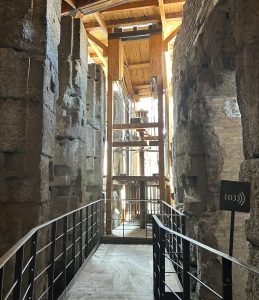
So, to me and many others, the Colosseum is an icon, known for its rich history of animal hunts, public executions, and most notably, gladiator fights. Walking up from under the floor of the massive amphitheater, retracing the steps that prisoners turned soldiers had taken thousands of years prior, mere moments before their deaths, was like stepping out of a novel I had read when I was younger.
We began “backstage” to the action, several meters underground, where gladiators made their final preparations before being sent out into battle in front of tens of thousands of spectators, eventually making their way to the arena. Every detail revealed an element of Roman history, the sheer idea that the brick that I was sitting on had once belonged to Roman nobility absolutely baffled me. Stepping back in time is one thing, but having thousands of years of history literally at my fingertips was an entirely different ball game.
Ultimately, the essence of Italy’s food, architecture, and culture are seen in the historic cities of Venice, Florence, and Rome. From Venice’s antiquated bridges and narrow canals, to Florence’s bustling streets, full to the brim with artistic masterpieces, and Rome’s historic sites, Italy flaunts its rich culture with pride.
While in Italy, I was able to submerge myself into Italian culture, which is almost the polar opposite of my own. I observed fashion, art, religion, and even food, which were fantastic at face value; however, I learned that culture is not defined by what I can see or buy, but by what I can understand, feel, and recall. In the words of American novelist Thomas Wolfe, “Culture is the arts elevated to a set of beliefs.”
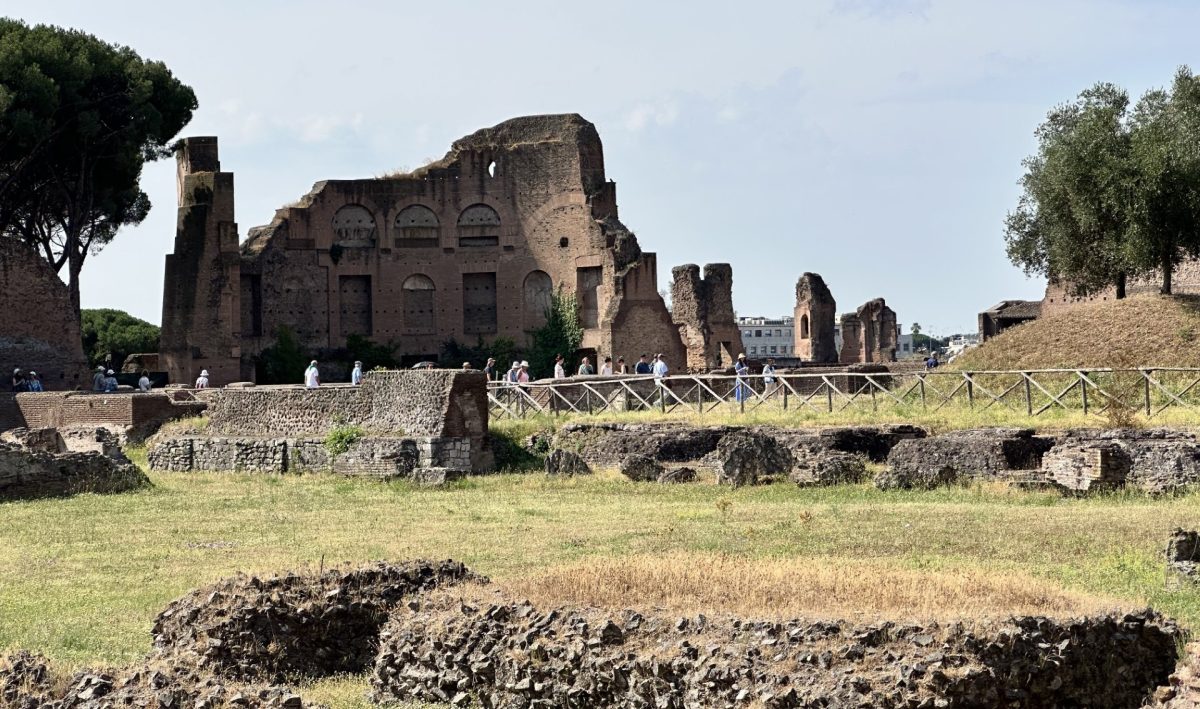
–July 3, 2025–

